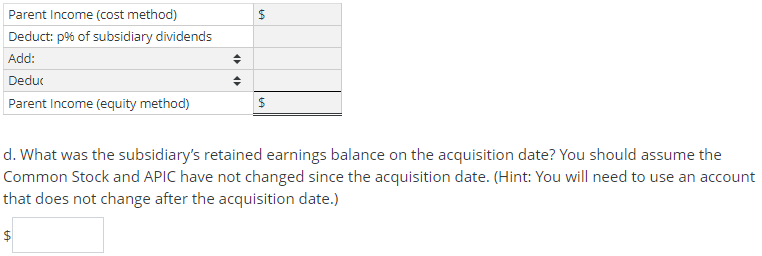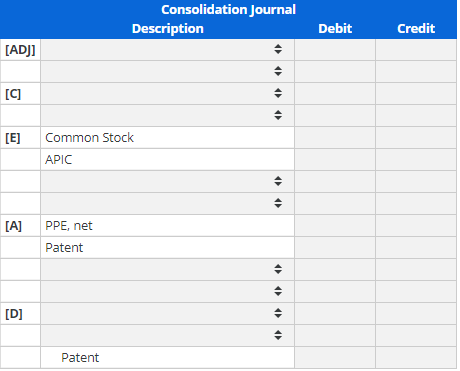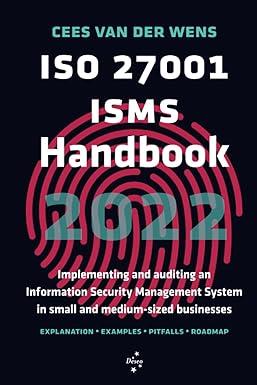Question
Inferring consolidation entries from consolidated financial statementsCost method Assume a parent company acquired a subsidiary on January 1, 2015. The purchase price was $1,100,000 in
Inferring consolidation entries from consolidated financial statementsCost method Assume a parent company acquired a subsidiary on January 1, 2015. The purchase price was $1,100,000 in excess of the subsidiarys book value of Stockholders Equity on the acquisition date, and that excess was assigned to the following [A] assets:
| [A] Asset | Original Amount | Original Useful Life | |
| $340,000 | 17 years | |
| 360,000 | 12 years | |
| Goodwill | 400,000 | Indefinitie | |
| $1,100,000 |
The parent company uses the cost method of pre-consolidation Equity Investment bookkeeping. The Goodwill asset has been tested annually for impairment and has not been found to be impaired. Selected accounts from the parent, subsidiary, and consolidated financial statements for the year ended December 31, 2019, are as follows:


a. For the year ended December 31, 2019, explain how the parents pre-consolidation investment income of $100,000 was determined.
a. Under the cost method, investment income equals the dividends received from the subsidiary.
b. Under the cost method, investment income equals equity income minus dividends received from the subsidiary.
c. Under the cost method, investment income equals equity income plus dividends received from the subsidiary.
b. Explain how the parents December 31, 2019 pre-consolidation Equity Investment balance of $1,760,000 was determined.
a. Under the cost method, it is the original purchase price plus dividends received by the subsidiary since acquisition.
b. Under the cost method, it is the original purchase price for the subsidiary.
c. Under the cost method, it is the original purchase price plus equity income and minus dividends received by the subsidiary since acquisition.
c. For the year ended December 31, 2019, reconcile the parent companys pre-consolidation net income of $1,700,000 to the consolidated balance of $1,810,000.
Do not use negative signs with your answers.

e. Why arent the Stockholders Equity accounts of the subsidiary reflected in the consolidated balance sheet?
a. The subsidiarys stockholders equity is not held by a party outside of the economic entity represented in the consolidated financial statements and, as a result, should not be included in the consolidated stockholders equity.
b. The subsidiarys stockholders equity is held by a party outside of the economic entity represented in the consolidated financial statements and, as a result, should not be included in the consolidated stockholders equity.
c. The subsidiarys stockholders equity is held by a party outside of the economic entity represented in the consolidated financial statements and, as a result, is reflected in the Equity Investment account on the consolidated balance sheet rather than be included in the consolidated stockholders equity.
f. Provide the consolidation entries for the year ending December 31, 2019.

Step by Step Solution
There are 3 Steps involved in it
Step: 1

Get Instant Access to Expert-Tailored Solutions
See step-by-step solutions with expert insights and AI powered tools for academic success
Step: 2

Step: 3

Ace Your Homework with AI
Get the answers you need in no time with our AI-driven, step-by-step assistance
Get Started


